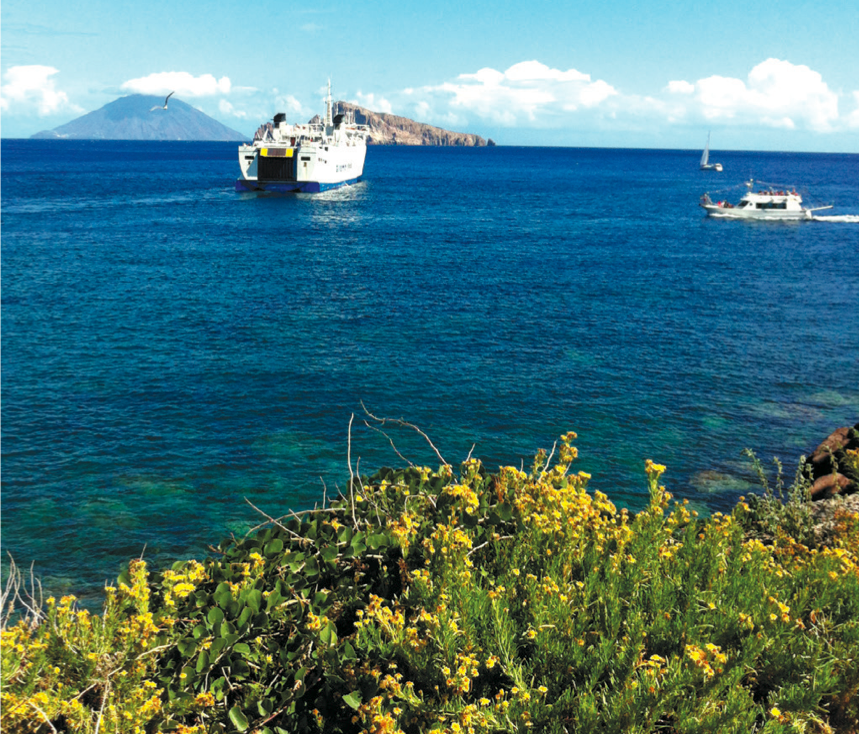Sicily: An Island with Cuisine You Can't Refuse
Last fall, I had the great pleasure of spending almost two weeks in the feast of the senses that is Sicily, the island off the coast of the tip of Italy’s boot.
The 9,925-square-mile island, the largest in the Mediterranean, including 620 miles of coastline, is a cacophony of cultures as a result of the many times it has been “conquered” by one invading army after the next. Once the site of Roman, Greek and Phoenician colonies, the Byzan- tines used the island as a launching pad to conquer the rest of Italy. The Arabs invaded in 965 BC, followed by the Normans, Germans, French and, ultimately, the mainland of Italy itself.
Made famous, or, rather, infamous, as the birthplace of the Corleone family in Francis Ford Coppola’s The Godfather (based on the novel by Mario Puzo), the taint of organized crime has perhaps spared the island from being overrun by the throngs of tourists that flock to other parts of Italy—and the inevitable homogenizing changes that brings.
A survey done among readers of the family of Edible publications around the United States and Canada showed that a great majority of our readers make restaurant reservations even before they book their accommodations when traveling, and I am a sterling example of this “Edible ethos.” Indeed, I had a long list of culinary destinations all mapped out before I even touched down in Sicily’s capital city of Palermo—ready to hit the ground eating.
Gustatory highlights included seeing for the first time capers growing on the island of Salina; the extraordinary fish market in Catania and our lunch there at Osteria Antica Marina; relishing squid ink pasta with fresh sea snails on the island of Panarea while the Stromboli volcano awed with its natural fireworks show; a birthday hike and picnic on Mt. Etna that included sausages from F.Illi Serra, honored by the Guinness Book of World Records just days before for producing the world’s longest salsiccia (sausage); and a decadent breakfast (yes, breakfast) of brioche and espresso-almond granita. I never knew that pasta twice a day was possible, but, happily, it often was.
It was at the Villa Sant’Andrea, in the seaside town of Taormina, though, that I was invited into the kitchen, and soul, of Sicilian cooking. A generous chef at the Villa Sant’Andrea shared with me his time and the secrets of his caponata, a dish that showcases bursting-with-flavor late summer and early fall produce. With a Mediterranean climate very similar to our own (well, the non-foggy parts...), eggplants, basil and tomatoes abound on Sicily, alongside the exotic capers. The slopes of majestic Mt. Etna, in glorious sight of Taormina, produce exquisite olive oils, the perfect complement to meld the flavors of the vegetables.
For a traveler like me, learning to prepare traditional foods under the tutelage of a native master is an experience that far surpasses a day spent lying on a palm-lined beach, or visiting the finest castles or ancient ruins. Sicily is the ideal culinary treasure trove in which you can seek out and find exactly that.
I believe it was no coincidence that it was at Villa Sant’Andrea’s sister property, the storied Grand Hotel Timeo, high on the hill in Taormina, that the longtime barman encouraged me to indulge in the Sicilian “tradition” of brioche and granita for breakfast. Living every day to its fullest is indeed a tradition in Sicily—you never know who might be arriving on the next tide.
I’m already dreaming of my next visit to this extraordinary culinary melting pot of an island.
AnticaMarina.it
Facebook.com/MacelleriaFlliCerraPiedimonteEtneo
HotelVillaSantAndrea.com
GrandHotelTimeo.com





